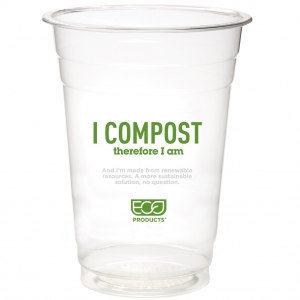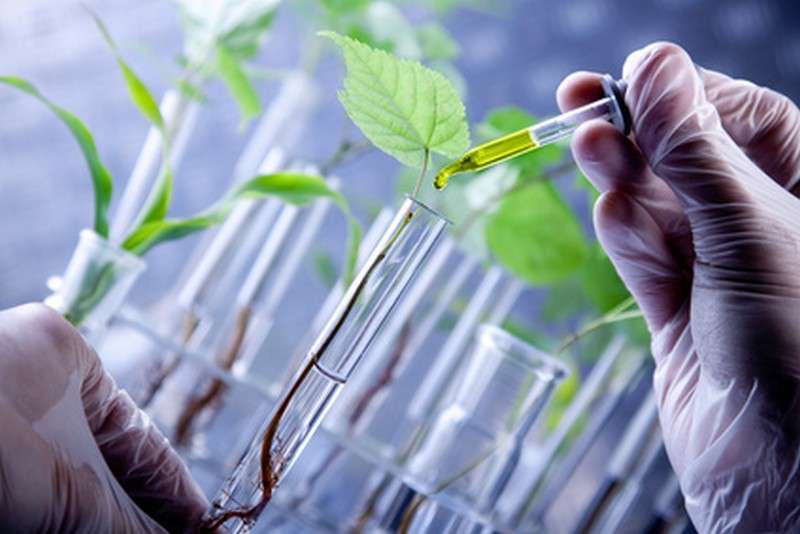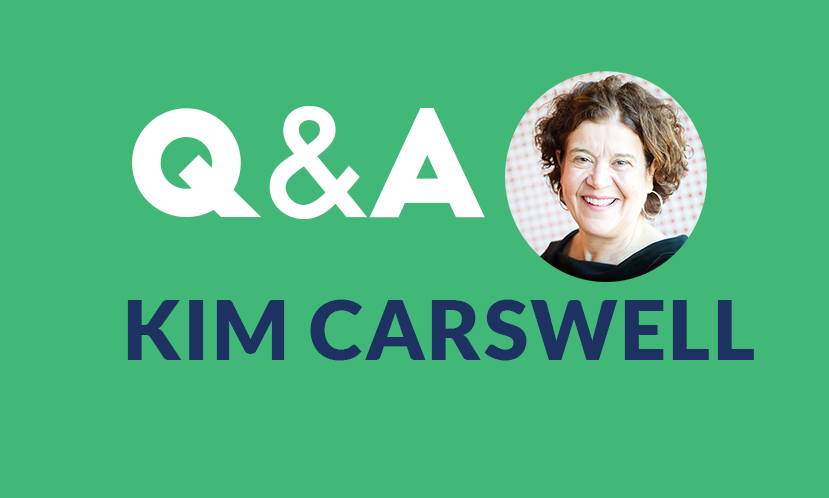One of plastic’s greatest features is its transparency; its clarity allows a product to be clearly shown and displayed.
Particularly for consumer goods and food & beverage packaging, transparency is a critical feature that can enhance the way a consumer experiences the product — think of the adage, “You eat with your eyes first.” Yet one of the biggest challenges for both consumers and recyclers is properly identifying different plastics when they’re all visually similar or identical. Without making the effort to identify a resin identification code or looking for the words “biodegradable” or “compostable” on the packaging, it’s nearly impossible to tell the difference between several types of plastic. Misidentification results in packaging entering the wrong recovery stream, such as compostable plastics in the recycling bin and recyclable bio-based materials in the compost bin, particularly when general knowledge of biopolymers is still murky.
Even for well-intentioned consumers, the phrase “made from plants” can be confusing as it tells a consumer nothing about proper end-of-use disposal. A study from the Shelton Group concluded that consumers “have trouble distinguishing recycled and recyclable products from each other, and some think that these products are also renewable, compostable and/or biodegradable.” Using a few examples of transparent plastic beverage containers, let’s set a few facts straight.
Bio-based plastic
 Bio-based plastics, such as bio-PET or bio-PE, have an identical molecular structure to their conventional counterparts, but are derived from plant or vegetable sources such as corn and sugar that can form chains of polymers. The appeal of their use is that plant-based feedstocks for plastics can reduce dependence on conventional petrochemicals. The Biodegradable Products Institute (BPI) states that a number of bio-based plastics, such as the bio-PET used in Coke’s PlantBottle, have a chemical structure identical to that of conventional petroleum-based plastics. The identical molecular structure allows bio-PET to be recycled in facilities where conventional PET is accepted. If its molecular structure is the same, it’s safe to toss in the recycling. European Bioplastics takes a similar position that bio-based equivalents can successfully enter the recycling stream with their conventional counterparts. In 2009, Coca-Cola introduced the PlantBottle, which contained 30% bio-PET and 70% conventional PET. This past June, Coca-Cola unveiled an updated version of the PlantBottle containing 100% bio-PET derived from sugarcane. In both instances, the PlantBottle is fully recyclable and accepted for PET recycling. The bottle’s messaging states “100% made from plants,” and without the additional information that the bottle is “recyclable as ever,” it would be tough for a consumer to determine whether the bottle is recyclable or compostable. In 2011, PepsiCo also explored bio-PET by developing and testing a 100% recyclable “green” bottle made from plastic derived from fruit and vegetable peels and byproducts.
Bio-based plastics, such as bio-PET or bio-PE, have an identical molecular structure to their conventional counterparts, but are derived from plant or vegetable sources such as corn and sugar that can form chains of polymers. The appeal of their use is that plant-based feedstocks for plastics can reduce dependence on conventional petrochemicals. The Biodegradable Products Institute (BPI) states that a number of bio-based plastics, such as the bio-PET used in Coke’s PlantBottle, have a chemical structure identical to that of conventional petroleum-based plastics. The identical molecular structure allows bio-PET to be recycled in facilities where conventional PET is accepted. If its molecular structure is the same, it’s safe to toss in the recycling. European Bioplastics takes a similar position that bio-based equivalents can successfully enter the recycling stream with their conventional counterparts. In 2009, Coca-Cola introduced the PlantBottle, which contained 30% bio-PET and 70% conventional PET. This past June, Coca-Cola unveiled an updated version of the PlantBottle containing 100% bio-PET derived from sugarcane. In both instances, the PlantBottle is fully recyclable and accepted for PET recycling. The bottle’s messaging states “100% made from plants,” and without the additional information that the bottle is “recyclable as ever,” it would be tough for a consumer to determine whether the bottle is recyclable or compostable. In 2011, PepsiCo also explored bio-PET by developing and testing a 100% recyclable “green” bottle made from plastic derived from fruit and vegetable peels and byproducts.
It’s quite an accomplishment that polymer scientists can develop drop-in bio-based resins made from plants and use these in consumer packaging, but the recyclability messaging needs to receive equal attention. When a consumer is ready to toss the bottle, they could misinterpret the meaning of bio-based plastic or “made from plants” language and mistakenly toss it in the compost bin. These bioplastics will not break down in compost facilities and the burden gets passed on to composters while recyclers lose out on the opportunity to capture that PET content. Even though the words “plant” and “green” may be associated with compostable or biodegradable packaging, only bio-based or bio-derived plastics that are molecularly identical to conventional plastics are accepted by recyclers and can be successfully recycled. With the ongoing priority to shrink carbon footprints and cut down on non-renewable fossil fuels, the use of bio-based plastics will grow, but companies using these bio-based plastics need to make sure recyclability and proper end-of-use disposal options are clear and evident for consumers.
Compostable plastic
 Compostable cold cups, which are a popular option for outdoor events, pose a similar challenge for consumers. They are transparent and have the same feel as conventional plastic, but the markings for “compostable” or “biodegradable” may be hard to identify when they’re on the bottom of the cup or printed in light-colored inks. For on-the-go consumers, a cup that looks and feels like a regular plastic cup may be mistakenly tossed into the trash or recycling. Anyone planning to use compostable or biodegradable cups in lieu of plastic cups should ensure that the cups are clearly distinguishable from regular plastic, that the appropriate compost collection streams are available, and that the customer understands how to dispose of a compostable or biodegradable material. Some compostable plastics are also technically recyclable and recoverable through automated sorting technologies (such as PLA), but currently there is not enough of this material concentrated in the general recycling stream to prioritize its separation and recovery.
Compostable cold cups, which are a popular option for outdoor events, pose a similar challenge for consumers. They are transparent and have the same feel as conventional plastic, but the markings for “compostable” or “biodegradable” may be hard to identify when they’re on the bottom of the cup or printed in light-colored inks. For on-the-go consumers, a cup that looks and feels like a regular plastic cup may be mistakenly tossed into the trash or recycling. Anyone planning to use compostable or biodegradable cups in lieu of plastic cups should ensure that the cups are clearly distinguishable from regular plastic, that the appropriate compost collection streams are available, and that the customer understands how to dispose of a compostable or biodegradable material. Some compostable plastics are also technically recyclable and recoverable through automated sorting technologies (such as PLA), but currently there is not enough of this material concentrated in the general recycling stream to prioritize its separation and recovery.
Rather than tossing compostable plastics into the landfill or recycling, compostable plastics optimized and designed for disposal in composting environments should be tossed in a composting stream alongside food waste, yard waste, and other organic matter where it can break down into non-toxic biomass, water, CO2, or heat. This gives the cup the best possible opportunity of maximizing its inherent value as a bio-based material. To ensure that materials go where they’re designed to go at their end of use, it’s critical to have a corresponding network of collectors and composters accepting compostable packaging throughout the country.
The SPC request’s that if you’re a company or vendor using bioplastics for your products and packaging, it’s important to use clear and substantiated messaging about proper end-of-use disposal in order to give a package the best possible chance of being reincorporated into a closed-loop system through its optimal recovery stream. The bioplastics market continues to grow, and as we see their use and application in consumer products growing, the SPC hopes that companies and consumers alike will make responsible and informed choices. The SPC’s soon to be released How2Compost Label, is currently under development in collaboration with BPI and SPC member companies. The How2Compost label was inspired by the success of the How2Recycle program, and aims to provide consumers with important composting education and instructions through on-package labeling. We hope the How2Compost Label will advance consumer knowledge and reduce contamination in composting streams.


 EC member: Kim Carswell
EC member: Kim Carswell
